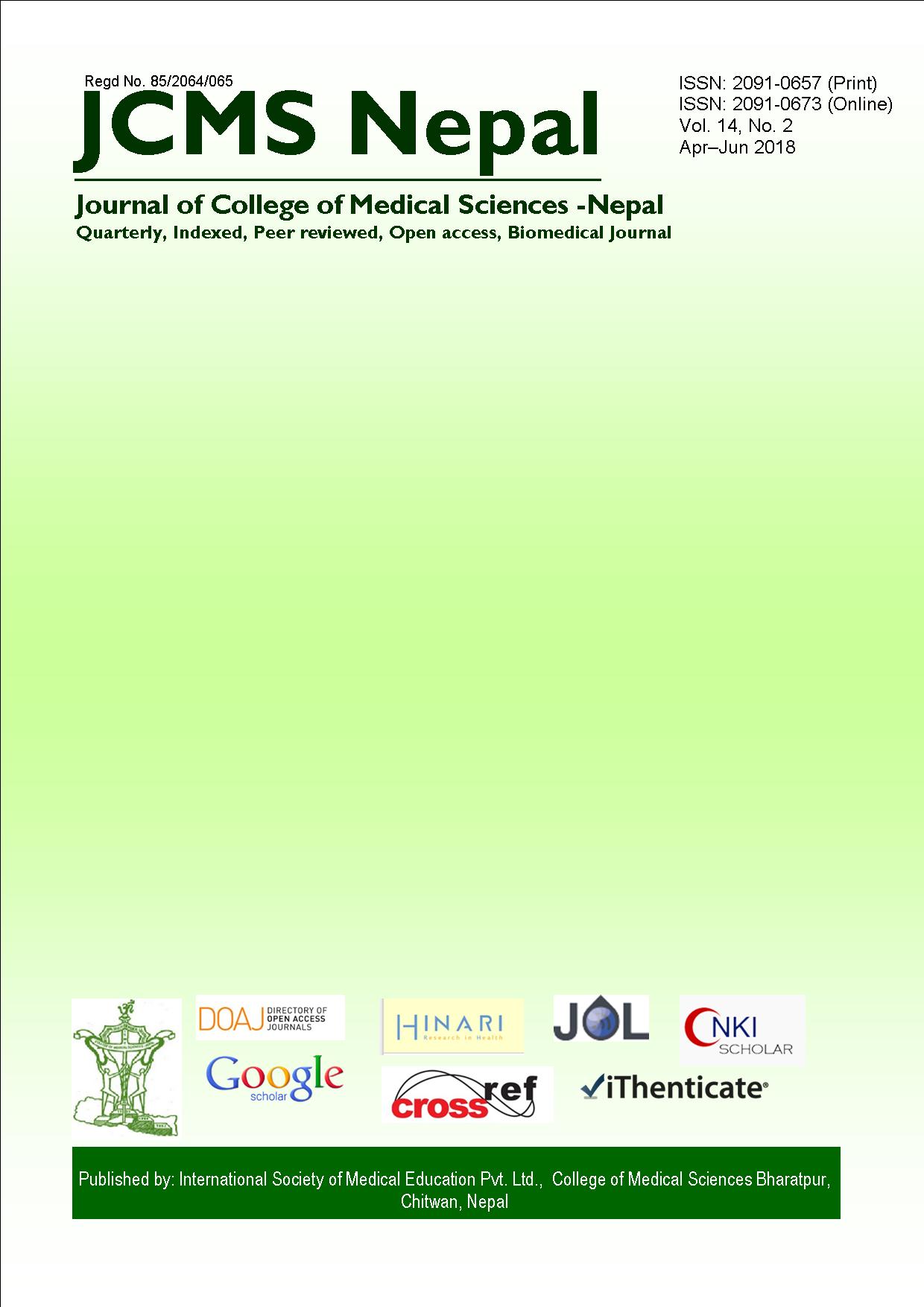Pediatric brain abscess clinical profile, management and outcome at tertiary care centre in Nepal
DOI:
https://doi.org/10.3126/jcmsn.v14i2.20339Abstract
ABSTRACT
Background: Brain abscess in pediatric population is serious life threatening problem. Many risk factors are associated with this entity like congenital heart disease, ear infection and immunocompromised state. Early diagnosis and treatment with minimal invasive procedure has good outcome.
Materials and Methods: This is a hospital based cross-sectional study conducted at institute of Medicine (IOM), Tribhuvan University Teaching Hospital Kathmandu, Nepal over the period of 3 years between September 2014 to August 2017. Clinical profile, management and outcome were analyzed.
Results: A total of 27 cases were taken for the surgical management in the present study. There were 18 male and 9 female with the male to female ratio of 2:1. Mean age of the study population was 7.08 years. Otogenic Abscess was the most common 37.03% (n=10) and the temporal lobe was the most common site (37.5%). Headache was the most common clinical presentation seen in 74.07 %. All the cases were initially managed with the burrhole and aspiration. Only 14.8 %( n=4) of cases subsequently required surgical excision of the abscess wall. Only18.5 %( n=5) of the cases required multiple session aspiration. Positive culture was seen in 25.9% (n=7). Pseudomonas aeruginosa and E.coli were the commonest organisms grown. Mortality rate was 3.7%.
Conclusion: Modern advances in radio imaging and multidisciplinary team involvement has decreased the morbidity and mortality.
Keywords: otogenic brain abscess; pediatric brain abscess; tubercular abscess.
Downloads
Downloads
Published
How to Cite
Issue
Section
License
This license enables reusers to copy and distribute the material in any medium or format in unadapted form only, for noncommercial purposes only, and only so long as attribution is given to the creator.




